Budapest is one of the most beautiful European cities and is perfect for a city break. It has a rich history and has been an important centre for trade and commerce for centuries.
Budapest is a city that never sleeps, with plenty to offer no matter what time of day. Budapest’s nightlife is considered one of the best in Europe, with some clubs staying open until dawn. Many museums, such as the House of Terror Museum, are worth visiting, which detail the horrors of World War II and the Holocaust.
The city has much more to offer than its nightlife and museums, though, with many hidden gems scattered throughout its streets. Directly from our local Spotters in Budapest, Here are 9 Budapest Hidden Gems That Will Make Your City Break In Budapest So Much Better.
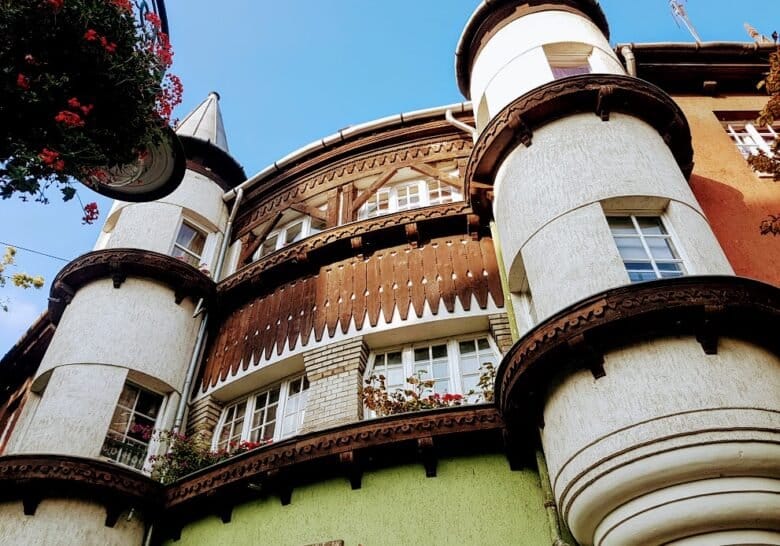
Wekerle Estate – A fall fairy in the city
” When I feel like going for a long walk but don’t want to leave the city behind, Wekerle is a delightful option for me – it’s a place to unwind and disconnect.
Weke what? Wekerle. It is not a weird Hungarian word, but the name of Sándor Wekerle, a Prime Minister at the beginning of the 20th century. He had the idea of creating, together with a colony of young architects, a liveable area for local workers.
On the map, Wekerle looks like a stamp, and it is even enclosed by wooden gateways. Inspired by medieval and rural buildings, Wekerle is a fully equipped “village” in the city; it has schools, a (stunning) police station, culture and entertainment all immersed in trees – no supermarket signs.
A cardinal concept of Wekerle is the “garden square”, the main one being named after Károly Kós, the Transylvanian architect who designed part of the complex. It’s wonderful in the fall – because of the colours, I feel like I’m in a Hungarian village in Transylvania.”- Claudia Leopratti
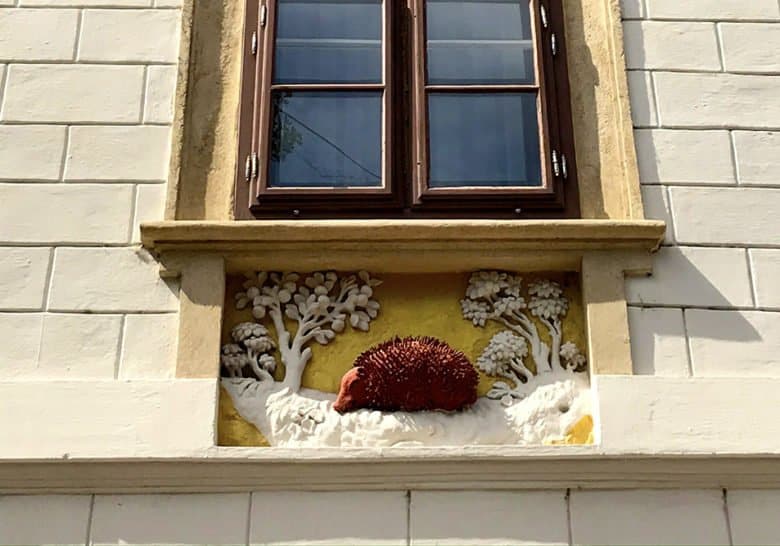
Red Hedgehog House – Oldest house in town
“There is actually no clear consensus on which is Budapest’s oldest house – most buildings that could qualify have been heavily rebuilt several times, so it could all come down to which one has the oldest stones lodged somewhere in its walls.
The initial structure of what would later become the Red Hedgehog house can be dated back to around 1260, so ours is a very strong candidate. The record that it does definitely hold according to all documents is being the first two-story house in town.
Four houses stood here initially, reduced to three in the aftermath of the Turkish occupation; according to some testimonies, the last Ottoman governor of Buda was actually killed right in front of these houses. In 1696, the building was already mentioned as the Red Hedgehog Inn (A Vörös Sünhöz, in Hungarian, or zum Rothen Igl, in German).
The inn was to become a popular venue, which hosted balls and plays as well. Several renovations kept it in good shape in the 19th century, at the same time disguising its original, medieval elements. The building luckily survived WWII mostly unharmed, but the shelling proved somewhat fortuitous as well, uncovering the historical elements in its structure.”- Iulia Notaros
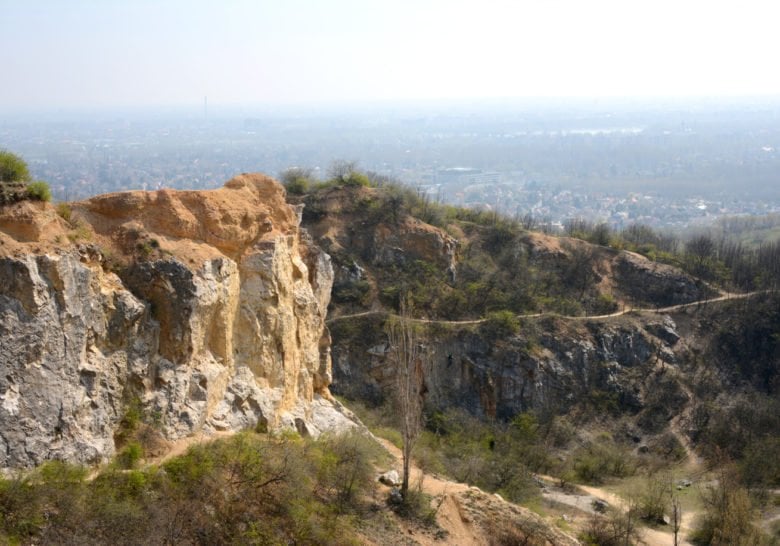
Róka-hegy Quarry – The Grand Canyon of Budapest
“Nicknamed the Grand Canyon of Budapest (though tiny canyon is perhaps a more fitting name), the old stone quarry of Róka-hegy is not fulfilling its initial function anymore- the quarry, considered by some sources to have been active since Roman times, ceased operations in the 1950s.
Today, one of its large stone walls is a beloved destination for climbers, and it has also become a spectacular, yet for the time being not overly popular, hiking route. Along it you will find stunning views of the city and the occasional stonier, steeper path, so make sure to come in sturdy shoes.
As in every wilder area of Budapest, there is a slight chance of encountering pesky ticks, so it’s advisable to wear long-sleeved clothes, or, in the warmer seasons, to use an insect repellent.”- Iulia Notaros
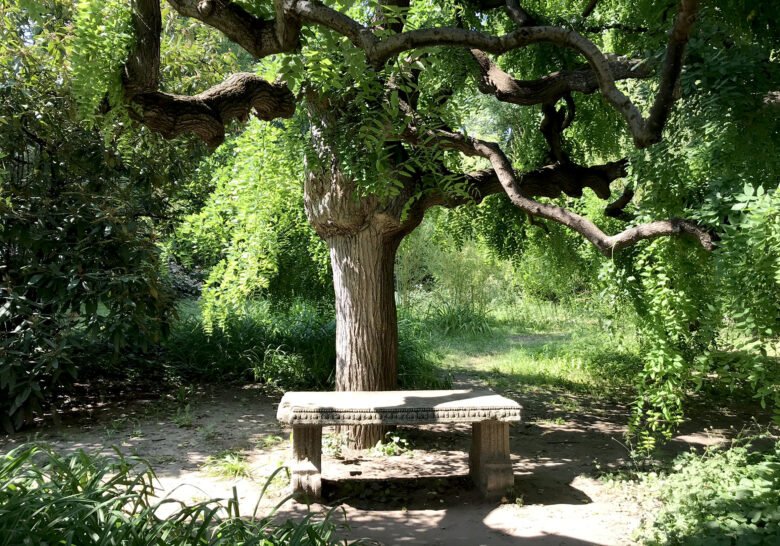
Japánkert in Zugló – Hidden zen oasis
“I was happy to discover that a much less known garden lies tucked away in a leafy corner of Zugló, on the premises of the Varga Márton gardening school.
The garden was set up by the school’s founder, Márton Varga, in 1928 and the stones which make up its walkways were excavated during the construction of the cogwheel railway line to Normafa. Varga tried to respect Japanese principles as much as he could and centred the garden around a small system of lakes.
In 1931, the garden was visited by Prince Takamatsu of the Japanese imperial household, who brought several plants as gifts, of which a cherry tree still stands in the garden today.
Other noteworthy trees include a Norway maple, estimated to be around 140 years old, a dawn redwood, thought to have been extinct until the 1950s when it was rediscovered in China, a Himalayan white pine and a Japanese pagoda tree.”- Iulia Notaros
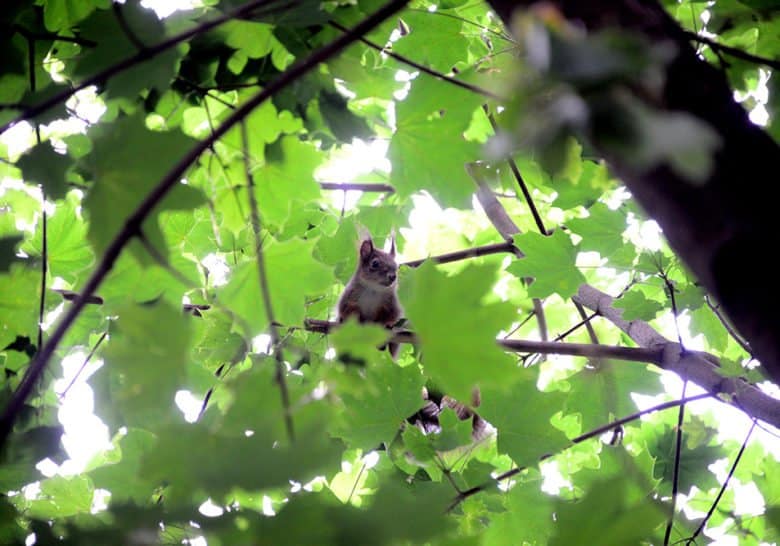
Jókai Garden – Urban natural reserve
“The Jókai-kert (garden) may be small, but it belongs to the Duna-Ipoly National Park, and is, as such, a protected area which gives a home to several species of birds, insects and inquisitive squirrels as well. The garden belonged to famous novelist Mór Jókai, who bought the abandoned stone quarry in 1853.
He then proceeded to plant vines and fruit trees, and also encircled the garden with large trees, such as maples and ash trees, to protect it from the strong winds which are still typical for the area-something you will find out if you make the rather arduous climb on foot.
Moving westwards from Déli station, it takes you through scenic neighbourhoods with great vistas and lasts about an hour and a half at a leisurely pace.”-Iulia Notaros
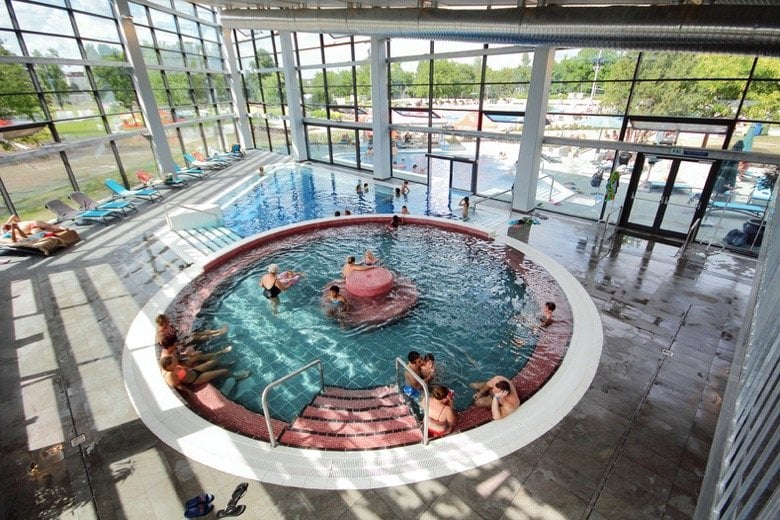
Paskál Strandfürdő – Novel bath house and spa
“Visiting bathhouses is such a Hungarian tradition, one of the few really great ones. Most of us have been socialising there since childhood. I have great memories from my home town, where we had good times with family there.
I’d lost this way of relaxing in Budapest for a while because I’d just been restless and surrounded by hundreds of tourists.
Paskál is not that well known (yet!) – it’s more about the calm, hot thermal water and warm vapor. This spa is new, very modern and cozy. It strikes such a great harmonious balance between being fun and relaxing.
My doctor advised me to come here for my backpain and I just enjoy it – in Hungary, it’s common for doctors to send you to a spa if you have rheumatism or muscle pain, because our water is special. The positive effects of the water help me a lot with this.”- Mihaly Lippai
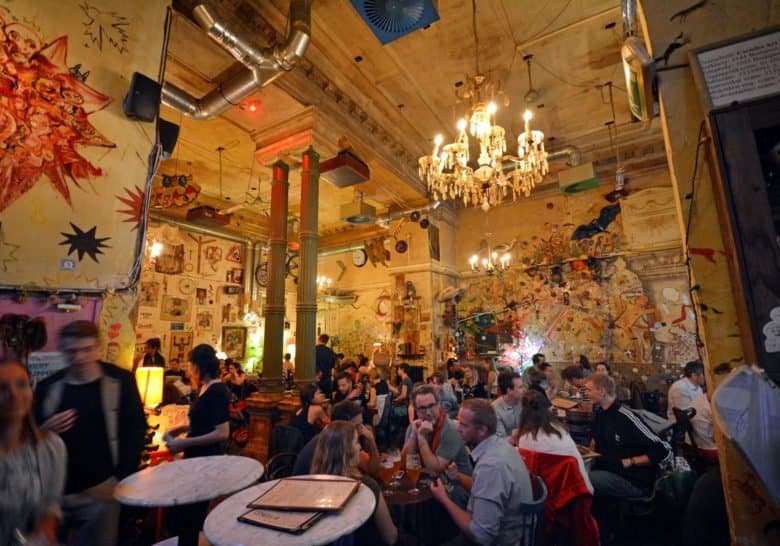
Csendes Vintage Bar & Café – Surrealist blast
“Csendes means “quiet” and it might sound a rather misleading name for this buzzy bar, but I got my personal explanation for it. Hidden in a secondary street near the National Museum, Csendes reopened 10 years ago in the seat of a former Transylvanian restaurant: a room where you actually feel at peace in the middle of the noise.
Serving Hungarian food as well as coffee and alcohol, with this rich mix of concepts, Csendes makes its very own one. It’s a ruin bar without the ruins, a pub without football matches and an eatery where you feel comfortable sitting for hours ordering just a tea or a beer.
Here nothing is like you would expect it, and in this sense, Csendes describes Hungarian culture just perfectly.”- Claudia Leporatti
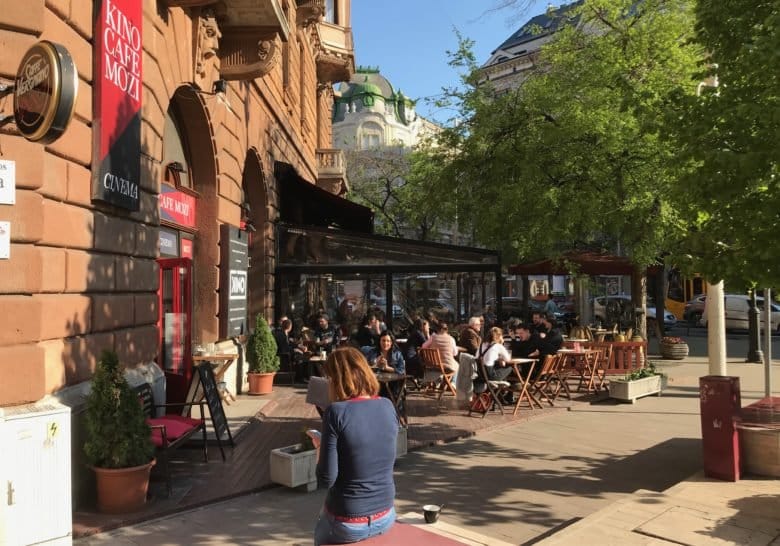
Kino Cafè – Coffee and movies on the big boulevard
“When I feel like a coffee in the sunshine, I like to sit at KINO Cafe: a cinema, a breakfast place and a coffee shop all in one.
Movies are screened in their original language and the crowd is very international. I’ve made more than one friends during some of the premieres hosted here. Kino offers space also to independent and small productions, attracting plenty of movie people among its fans.
KINO is very well positioned next to Vig, one of the most popular theatres in Pest, along the big boulevard, on the way between the train station designed by Eiffel’s company and Margaret Island.
During the day, I find it very inspiring to sit here and write, with people passing by, trams and some fine architecture in the background.”- Claudia Leporatti
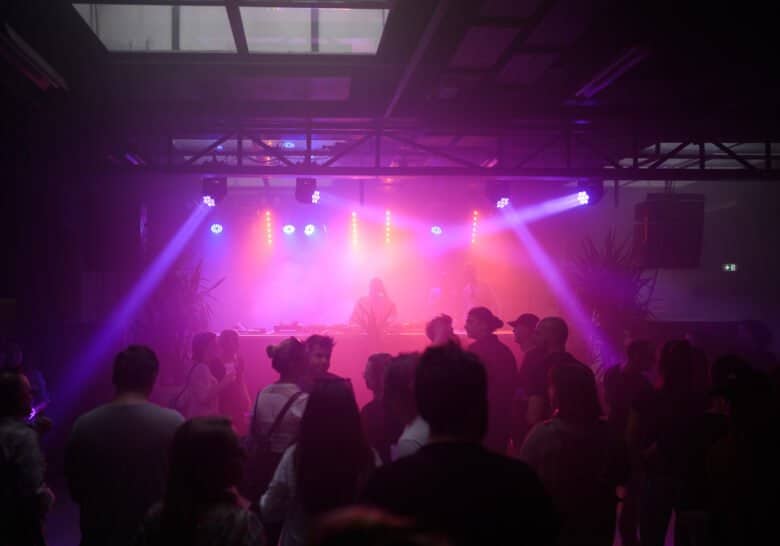
Turbina – Brand new cultural giant in the center
“After long preparation, Turbina opened its gates in October 2021 for curious audiences, making life in the 8th district even more sparkling and lively.
The building, which once was a hostel, is now, after massive reorganisation and reconstruction, one of the biggest underground attractions of Budapest’s nightlife. I have been watching the evolution of this huge house with astonishment, as it is rather rare nowadays for cultural venues of such volume to be newly opened in such a central location.
If it wasn’t yet tempting enough for a visit, then you should probably know as well, that the staff is filled with very active members of Budapest’s cultural life… As soon as it opened, their calendar was filled with fresh Hungarian underground musicians and artists, with several daytime programs as well.
You can even attend fun activities such as aerobic or bring your clothes to the occasional flea market and exchange them for something new. Just to mention another program out of many: every Tuesday there is the so called Roma Tuesday happening, with pure and honest Roma folk music to dance to.”- Eszter Baracskai
Click here to Discover all of our Locally Spotted hidden Gems of Budapest
